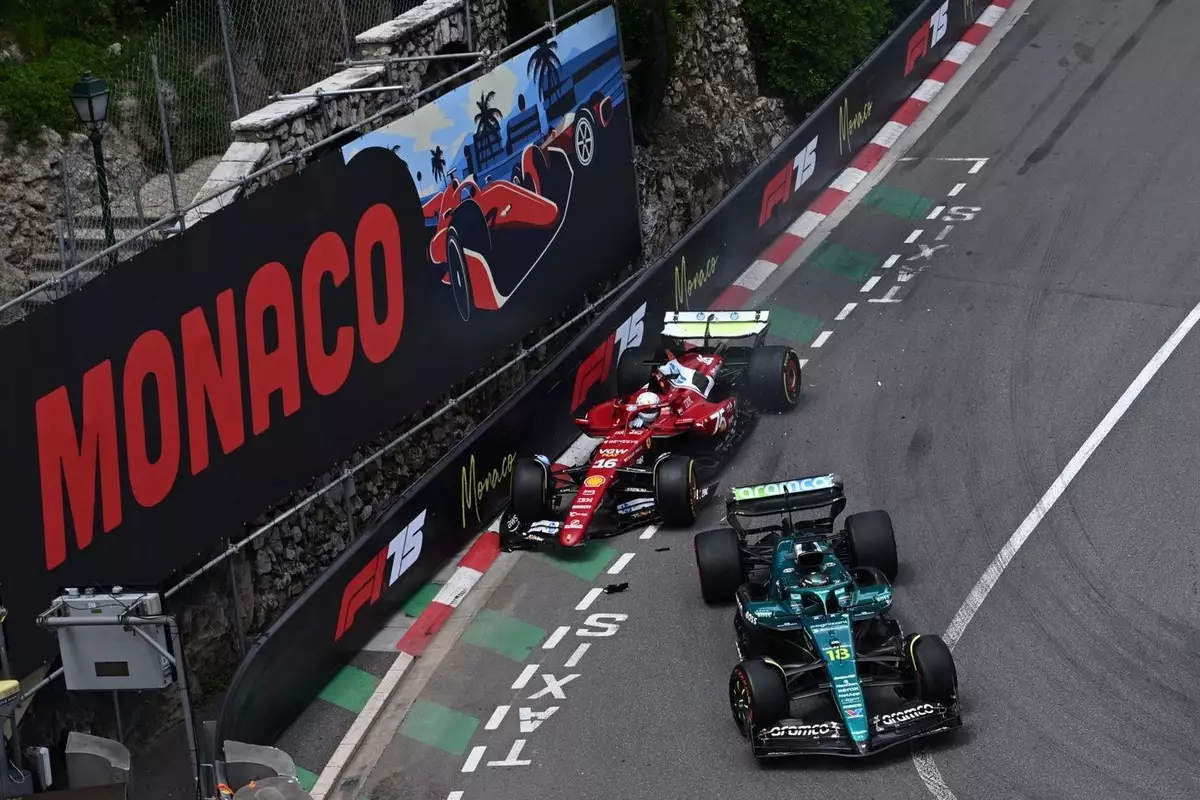The iconic streets of Monte Carlo bore witness to an exhilarating opening free practice for the Monaco Grand Prix, setting the tone for what promises to be a captivating race weekend. Ferrari’s Charles Leclerc stunned spectators by clocking a blistering time of 1m11.964s. However, the session was not without its drama, as tensions flared early on when Leclerc collided with Aston Martin’s Lance Stroll, forcing both drivers to the sidelines and igniting speculation about the perilous tightness of the circuit.
The incident occurred just nine minutes in, a mere prelude to the chaos that Monaco often evokes. Stroll, seemingly oblivious to the impending danger, slowly veered onto the racing line as Leclerc approached at full throttle. The impact brought out the red flags, halting the session as Leclerc sought a replacement for his damaged front wing. This chaotic moment underscored the unique challenges presented by Monaco’s narrow and unforgiving layout, where even the slightest miscommunication can lead to catastrophic consequences.
An Analytical Look at Performance and Strategy
Once the green lights flickered back on, initiations of speed emerged as drivers, cautious yet eager, sought to find their footing. Lewis Hamilton led the pack early, showcasing the adaptability of his Mercedes on medium tires. However, the real spark came when McLaren drivers Oscar Piastri and Lando Norris turned up the heat with their rapid transitions to soft compounds, establishing their presence among the frontrunners. Their performance strategies reflected a notable focus on testing the varying Pirelli tire compounds, a requisite for the race that indicated a potential shift in competitive dynamics.
As the session progressed, Leclerc reasserted his dominance, but one must ponder whether his exceptional lap time truly reflects Ferrari’s overall competitiveness or merely a brief flash of brilliance in an unpredictable season. Furthermore, Leclerc’s earlier complaints regarding balance issues paint a picture of a team still grappling with elusive setups, raising questions about Ferrari’s long-term potential in the face of Red Bull’s machine-like reliability.
The Rising Tide of McLaren and Williams
While Leclerc’s time dominated the headlines, the emergence of McLaren’s duo alongside Williams’ Carlos Sainz signaled a shift in the competitive landscape. Sainz’s performance during the session demonstrated a remarkable ability to navigate Monaco’s intricate sections, further cementing Williams’ growing stature in the sport. With both McLaren drivers finishing near the top, one can’t overlook the resurgence of the team that has historically been overshadowed.
Pivotal to McLaren’s strategy is their remarkable tire management, allowing drivers to utilize the soft compound effectively while still carving out competitive laps on harder options. This strategic execution is indicative of a team well-prepared for the unpredictable twists and turns inherent to Monaco.
Adverse Conditions and Strategic Implications
As competitors pushed their limits, it became abundantly clear that practice sessions in Monaco serve not just as opportunities to set fast times, but as vital learning experiences in real-time for both drivers and teams. The numerous near misses and the infamous poker-face moments of the drivers highlighted the intricate dance between aggression and caution necessary for success on such a challenging circuit.
Moreover, the bottlenecks around certain corners such as the Casino and the notorious swimming pool section contributed to heightened anxiety for drivers. This session was not only a test of speed but also a lesson in strategic agility. The ever-present threat of traffic added another layer of complexity, particularly for seasoned veterans like Hamilton, who are often regarded as masters of adapting to real-time challenges.
With Leclerc leading into the final runs and Max Verstappen closing in with every lap, the competitive tension rose palpably, hinting that this Monaco Grand Prix could set the stage for a thrilling showdown not too far in the future. As the weekend unfolds, the implications of these early skirmishes may provide valuable insight into how teams will navigate both the particularities of Monaco and the broader season ahead, exemplifying the unpredictable nature of Formula 1.

